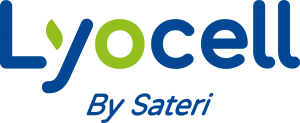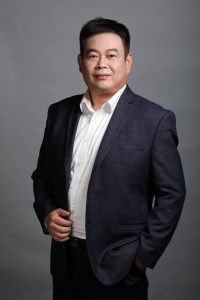Let’s Chat About Lyocell by Sateri!
Up Close with Tom Liu, Sateri’s Vice President and General Manager of Lyocell and Nonwovens Business, on Lyocell Outlook
In May 2020, Sateri successfully commenced production of Lyocell fibre in Rizhao, Shandong, China. China’s CCF Group spoke with Tom Liu to discuss Sateri’s recent development plans as the company marks its first year anniversary in commercialising Lyocell.
CCF: Sateri is the world’s largest cellulosic fibre manufacturer. Can you share with us the company’s development plans?
Tom: Over the past decade, Sateri’s production capacity has grown to 1.5 million tons a year. We’re currently ranked world number 1 in terms of production and sales volumes for textiles and non-wovens.
Moving forward, we will continue to deepen our integration and strengthen our partnerships with our viscose value chain partners. We will optimise our product performance and establish differentiated product categories to satisfy downstream customers’ needs.
For Lyocell, we plan to expand our domestic Lyocell production capacity from the current 25,000 tons to 500,000 tons by 2025. Today, we are constructing our facilities in Liyang and Rugao, Jiangsu Province, China.
CCF: We have seen Sateri’s bold expansion plans over the past one year. At the same time, we have also seen other domestic Lyocell producers announce their expansion plans. What is the outlook for Lyocell, especially in China’s domestic market?
Tom: Although Lyocell has existed in the global marketplace for nearly 30 years, it is not widely promoted or applied in textile products. There’s a lot of potential for growth as a result.
Lyocell has its unique attributes. It has better strength than cotton and is derived from sustainable and renewable tree plantations. In terms of comfort, fabrics made from Lyocell feels smooth, soft and drapes beautifully. It has excellent dry and wet strength, and absorbs moisture well, making it skin-friendly and breathable. Lyocell also has good colour absorption performance, making fabrics vibrant and bright.
Lyocell is usually used as a cotton substitute in traditional textile applications such as home textiles, denim, and outerwear. However, its use is not prevalent. But it is gaining popularity and we expect a significant increase in the use of Lyocell in the future. The current global demand for cotton is more than 27 million tons – this portends well for Lyocell’s growth potential.
The market for viscose, on the other hand, has matured with a stable demand and supply equilibrium. This contrasts with Lyocell which is growing rapidly as a relatively new entrant.
From an environmental protection and sustainability perspective, Lyocell production is closed-loop and uses a clean solvent with chemical recovery rate of more than 99%.
A problem the industry faces today is supply lagging behind demand. The industry needs to work together to meet consumers’ demand with cleaner natural fibres.
In short, with Lyocell’s unique product performance and environmentally-friendly characteristics, coupled with growth potential in textile, non-woven and industrial applications, we are optimistic about our Lyocell expansion plans in China. The stable economic environment in China is also a contributing factor.
CCF: With the rapid development of Lyocell, opportunities and challenges co-exist. From an industry perspective, what were the challenges in developing Lyocell, and how did Sateri overcome them?
Tom: We face three main challenges. First, the cost for producing Lyocell is higher. Second, we only started producing Lyocell recently and would still need to stabilise our operations to deliver better product quality. Third, we need to have more technical breakthroughs to improve compatibility with the yarn spinning and dyeing processes..
Sateri’s R&D efforts focus on eliminating technical bottlenecks. In addition, we believe in fostering collaborations and strong partnerships with value chain actors and relevant industry associations. Whether it is textile or non-wovens, wet wipes or dry wipes, we have a strong and ready network of customers and channels that we can gather feedback from and work closely with to respond to any technical issues that arise.
Fortunately, Sateri is part of the RGE group of companies, an integrated fibre supplier from sustainable plantation management to textile fibre and yarn production. This integration gives us upstream access and control over raw materials. The group plants one million trees a day, giving us an advantage in raw materials stability. This is Sateri’s unique advantage.
CCF: Sateri has been developing differentiated fibres, non-woven and Lyocell, etc. in recent years. Will you be introducing any other fibres in the future?
Tom: Sateri will develop according to the needs of our customers. Our R&D team has been advancing on various fronts and made significant progress. We regard new product development as a competitive advantage that helps us win the market and better serve our downstream customers. We will devote greater focus on developing more comprehensive product categories that meet market needs and improve our service capabilities.
CCF: Thank you very much for accepting our interview. Do you have any suggestions and expectations for the first Lyocell Industry Forum held by CCF?
Tom: Congratulations to CCF on this inaugural Lyocell Industry Forum. I believe that our long-term cooperation with CCF will create more opportunities for exchanges and collaboration with industry partners. I look forward to fruitful engagement with industry partners at the Forum in May. Let’s work towards a stronger and bigger Lyocell industry!

